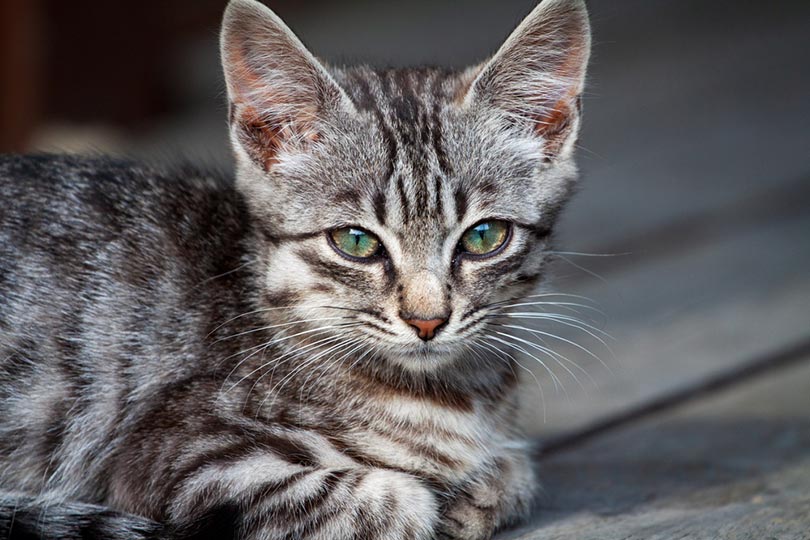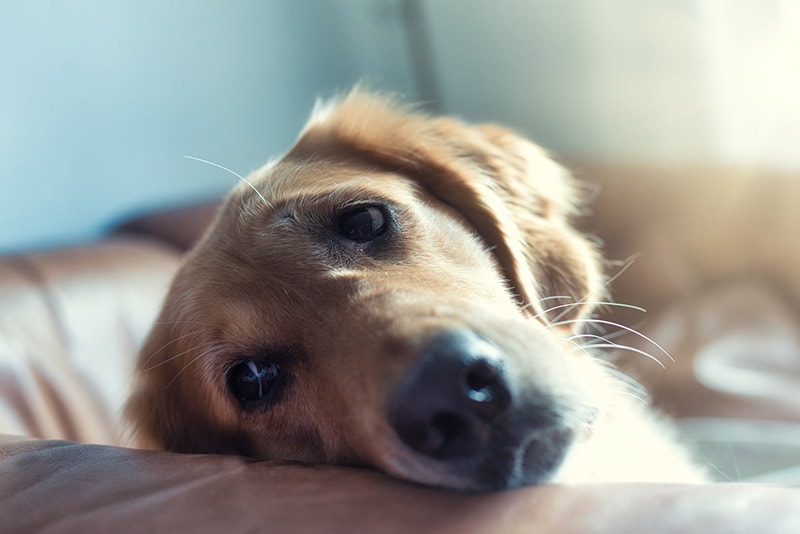Pica in Cats: Our Vet Explains Causes, Signs & Treatments

Updated on
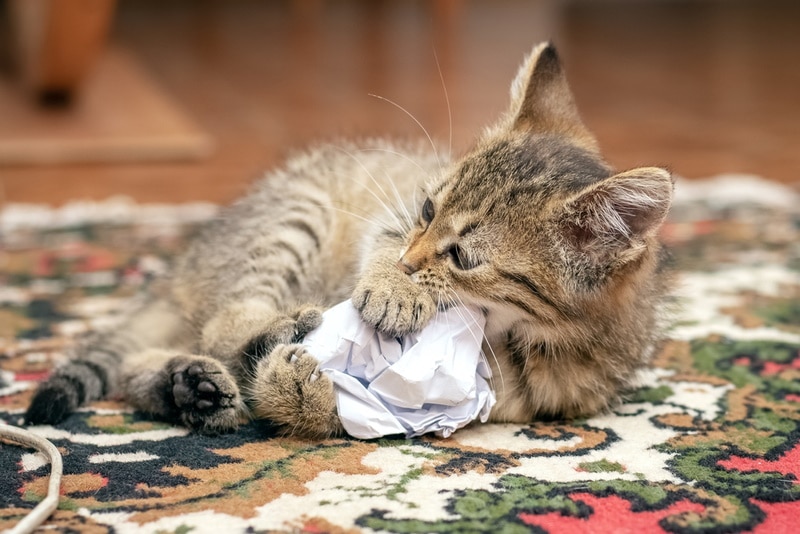
Pica in cats is the consumption of inedible materials like wool, cat litter, sand, wood, etc. Cats explore their surroundings with all their senses, so if you see them “tasting” certain substances or materials from time to time, this is likely to be normal exploration. It’s when this behavior becomes frequent and troublesome that your pet may be suffering from pica; the abnormal urge to eat inedible objects. The exact cause of pica is not known but genetic, behavioral and underlying health problems seem to play a part. Pica can result in secondary complications such as gastro-intestinal obstruction and should always be discussed with your cat’s veterinarian. In this article, you will learn what pica is, its causes and clinical signs, the treatments available, and what else you can do to help your cat.
What Is Pica in Cats?
Pica is an unusual disorder that is characterized by having an urge to eat, lick or suck inedible, non-nutritious materials. Pica is the name given to this behavior but it is not thought to have just one single cause and so is not a disease per se but a sign of other problems. Cats with pica more commonly ingest things such as wool, other fibers, cardboard, paper, plastic, rubber, cat litter and soil but anything is possible 1. Licking, sucking, or chewing inedible materials is also considered a characteristic of pica.
In general, any age, sex or breed of cat can suffer from pica however, oriental cat breeds such as Burmese, Siamese, and Birman have been found to be more prone to developing pica and so genetics are thought to play a part in some cases.
Pica in cats has multiple causes that can vary from disorders affecting appetite, neurological diseases, anemia, boredom, or stress. The inedible materials that your cat ingests can cause gastrointestinal upset and even blockage. Unfortunately, these can endanger your cat’s life, and you will need to act as soon as possible.
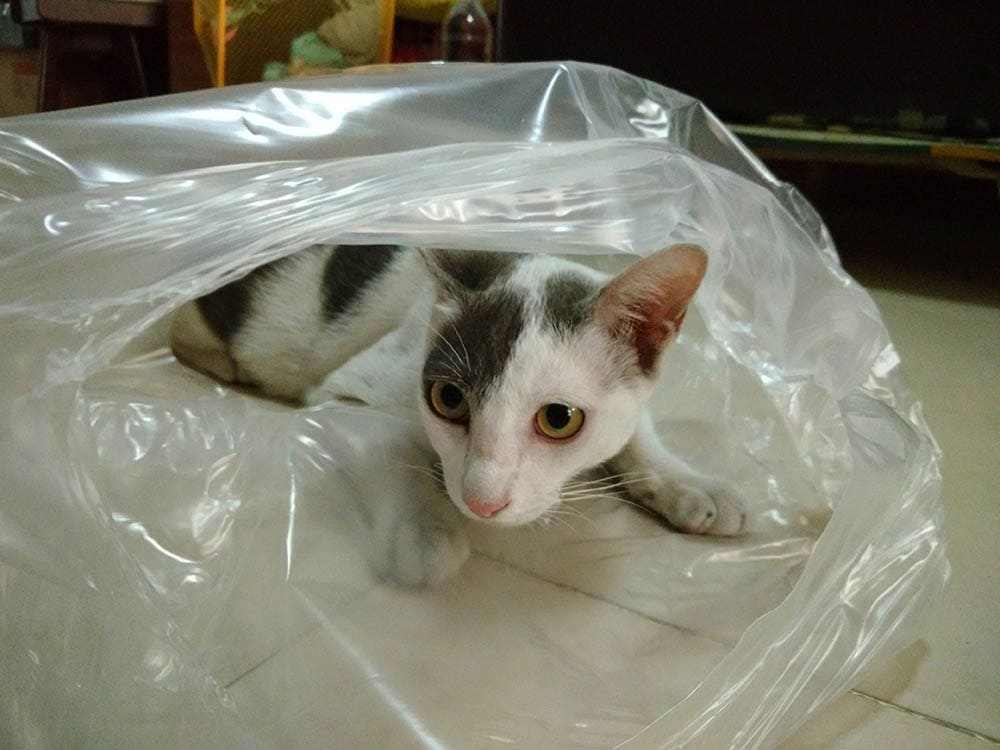
Dangers of Pica
Alongside any health problems caused by the underlying cause of the pica, secondary effects on the gastro-intestinal system can be severe. Ingesting string or thread (linear foreign bodies) is particularly dangerous because these tend to get stuck in the gastrointestinal tract and then bunch up the intestine, putting your cat’s life at risk. Linear foreign bodies can wrap around the base of your cat’s tongue and due to intestinal tract motility be pulled into the intestine. As the string is anchored at one end it results in a drawcord type effect where the intestine bunches up along the string/thread. This is particularly dangerous because it can lead to damage of the intestines and even perforation and resulting abdominal inflammation.
Cats with pica can also end up with nutritional imbalances or obstructions from ingesting larger objects or foreign material such as cat litter.
For this reason, it is important to take your cat to the vet for an evaluation if they are showing unusual behavior.
What Are the Signs of Pica in Cats?
Pica in cats has varying degrees of severity. Some pets ingest inedible materials only occasionally, while other cats show severe daily disturbance. The primary clinical sign of pica in cats is when your pet licks, sucks, chews, or eats inedible materials frequently.
By ingesting textile materials (e.g., wool, shoelaces, ribbons, strings, thread) or objects with sharp edges (e.g., plastic), severe complications like gastrointestinal obstruction can occur.
- Vomiting
- Diarrhea or constipation
- Hunched appearance
- Lethargy
- Lack of appetite
- Changes in behavior- hiding or being more clingy
What Are the Causes of Pica in Cats?
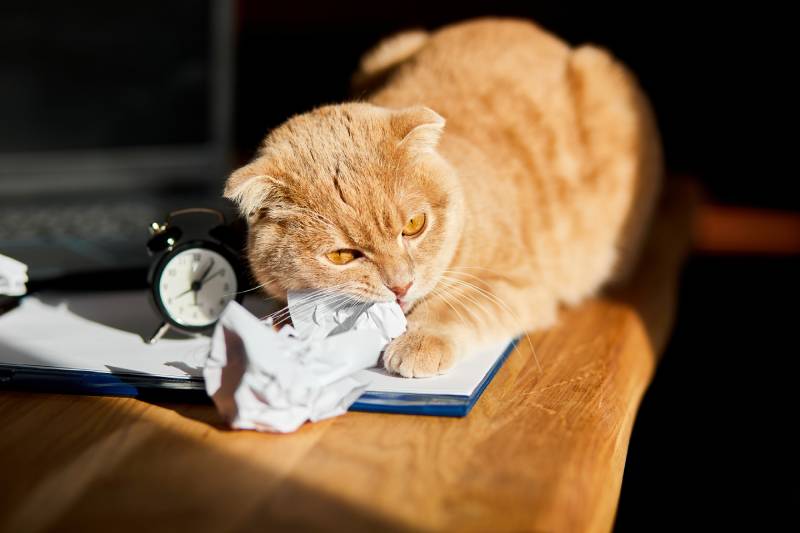
Scientists continue to research this condition because it is still not well understood. However, it is currently believed that this behavior becomes obsessive due to the reward sensations that the cat receives in the brain when they lick or swallow inedible materials. Moreover, researchers suspect there are several factors that can lead to pica in cats.
- Genetic predisposition
- Stress/anxiety or boredom
- Illness; such as disease affecting appetite, immune mediated hemolytic anemia, liver diseases, gastrointestinal diseases, neurological diseases and parasitic diseases
- Poor diet
- Not having access to ad lib food
- Not being able to express hunting behaviors
- Indoor cats
Pica in cats is not always a sign of a chronic disease, but it is still recommended to go to the vet because the results can be devastating for your cat’s health.
What Is the Treatment for Pica in Cats?
Chronic disorders like pica in cats often require a great deal of patience. Once your cat has been examined by your veterinarian, it may be recommended that they have diagnostic testing such as blood tests to assess general health or specific concerns. If the problem is thought to be behavioral and you know what your cat’s triggers are, you can change routines to help. Treatments will be targeted to the underlying problem and prognosis will vary accordingly.

How Do I Care for a Cat With Pica?
Once they have been checked out by your veterinarian the following suggestions may be appropriate for behavioral cases:
- Play with your feline more often: When cats don’t get enough physical activity, the resulting stress and accumulated energy can promote behavioral disorders, including pica. As a result, try to include games and mental exercises in your daily routine. Use cat toys, clicker training, or hide treats in different places around the house. In addition, playing will form a stronger bond between you and your cat.
- Redirect your cat’s licking and chewing behavior: Cats have a need to chew on various things sometimes (though it may just be out of boredom). To help them, try to feed your cat dry food (instead of wet) or give them dental treats, or silver vine. Check with your vet if using a lick mat or snuffle mat as an alternative way of feeding is appropriate.
- Get rid of the plants: If your cat likes to nibble on your plants, get rid of them or move them somewhere your cat cannot reach them. Many plants are toxic to cats.
- Make appealing items less appealing: For example, if your cat likes to lick and chew your blanket, use anti-lick veterinary sprays. These products will keep your pet away from appealing items.
- Give your cat medication as prescribed: Cats with pica don’t always need medication. However, in severe cases where stress reduction measures do not help, vets may prescribe medicine. Being consistent with medication is key to achieving good results.
Frequently Asked Questions
How Can Pica Be Prevented in Cats?
Unfortunately, pica cannot be prevented in cats. However, you can reduce the risk of your cat developing behavioral disorders if you provide them with adequate care and nutrition. You can also reduce the risk if you give your cat the physical activity and variety that they need; otherwise, stress and boredom can harm your pet’s mental and physical health.
What Cat Breeds Are More Predisposed to Pica?
All cat breeds can suffer from pica. However, breeds like Birman, Burmese, Siamese, and Orientals are more prone to developing this condition. Studies have not consistently shown that sex, age or other factors predictably increase the risk of pica.
Conclusion
Pica in cats represents the ingestion of inedible materials. Obsessive licking, sucking, and chewing are also part of this condition. The most common materials that cats consume are textiles, wool, sand from the litter box, wood, cardboard and plastics. Clinical signs are limited to licking, chewing, or ingesting inedible materials on a regular basis.
If your cat’s pica is due to a chronic disease (hyperthyroidism, liver, neurological, etc.), it will be accompanied by the specific signs of the respective condition. Pica can occur when your cat is a kitten and last a lifetime. When you see your cat chewing, licking, or eating various inedible materials, it’s time to go to the vet because this habit can lead to gastrointestinal disorders or obstruction, which can put their life in danger.
Featured Image Credit: MVolodymyr, Shutterstock



